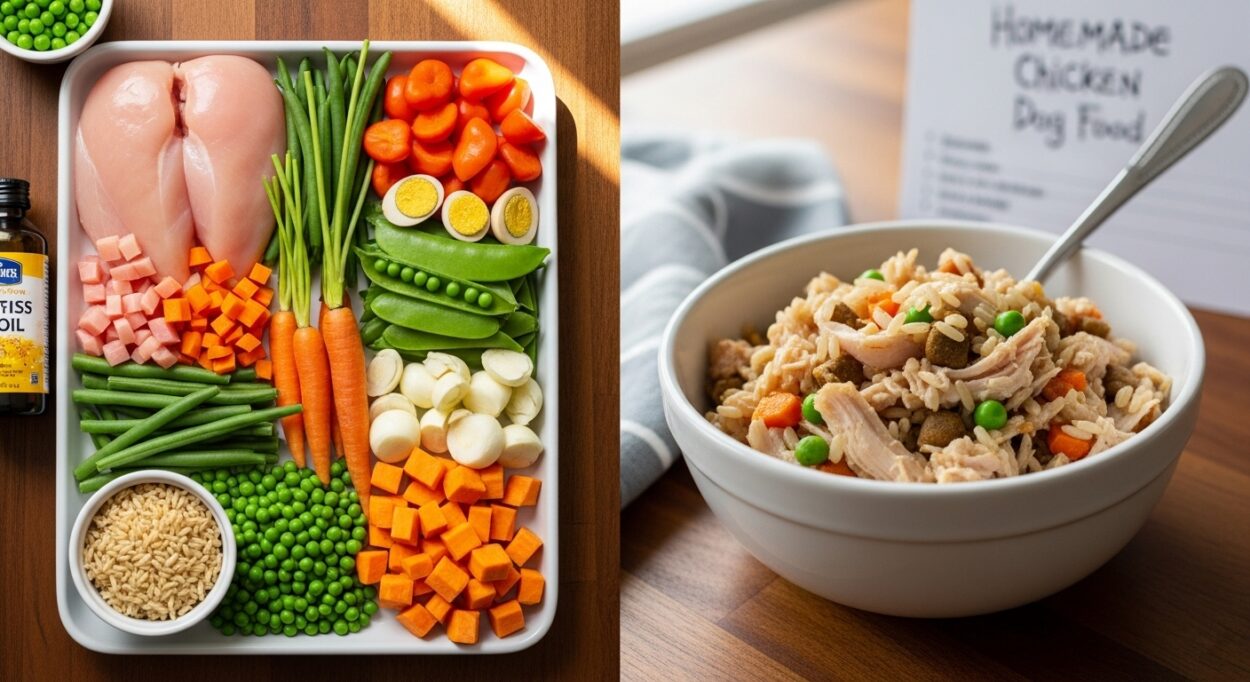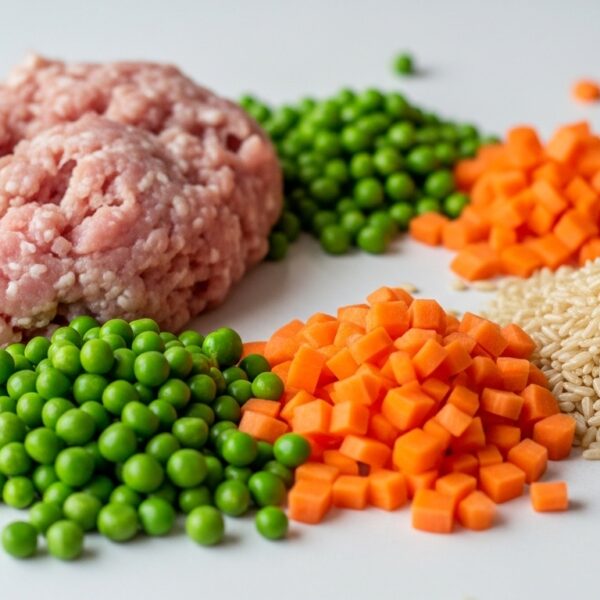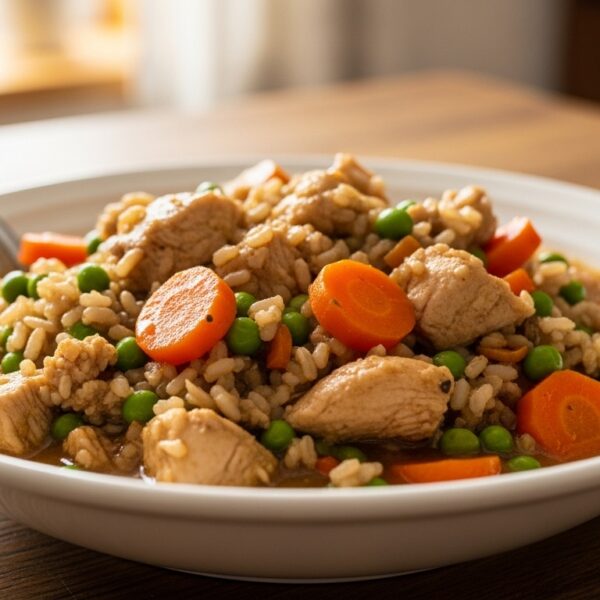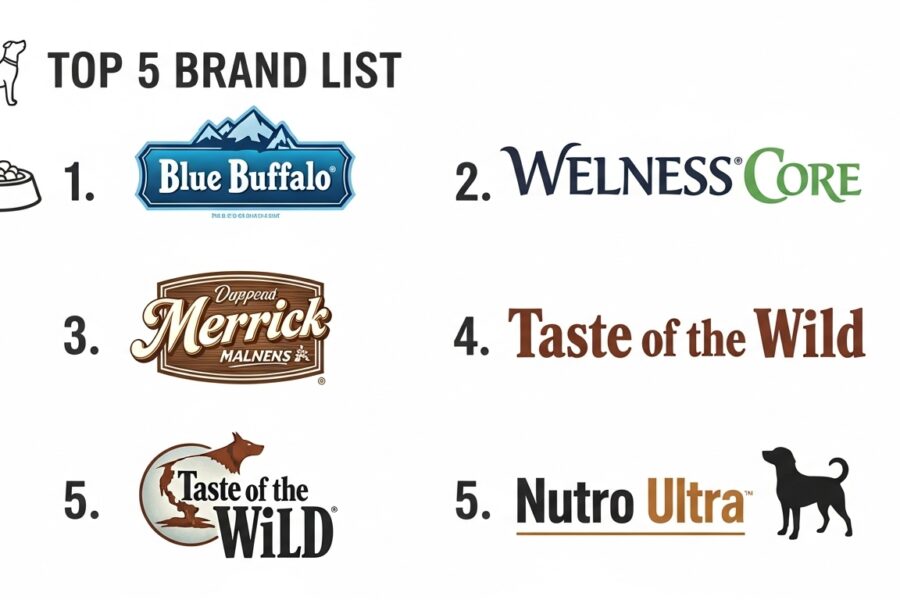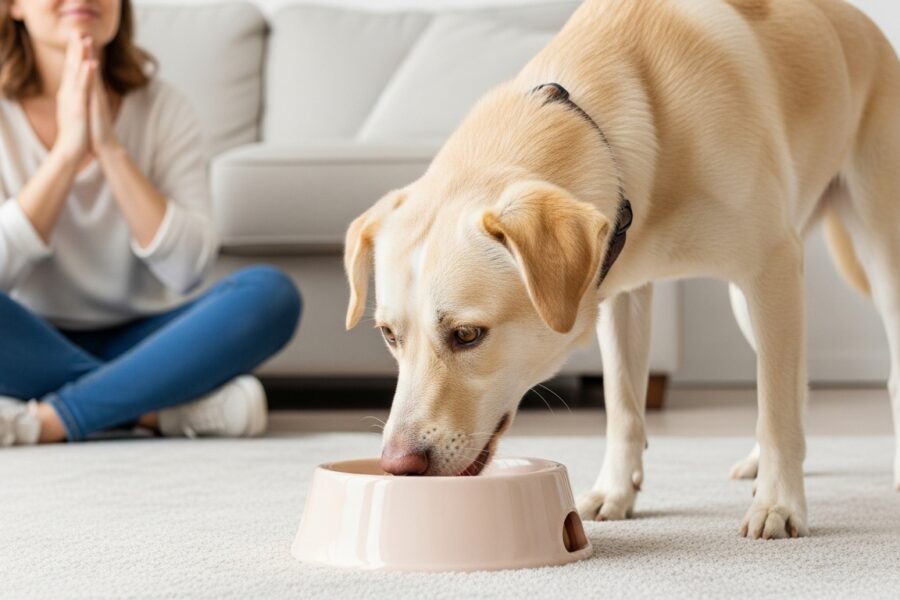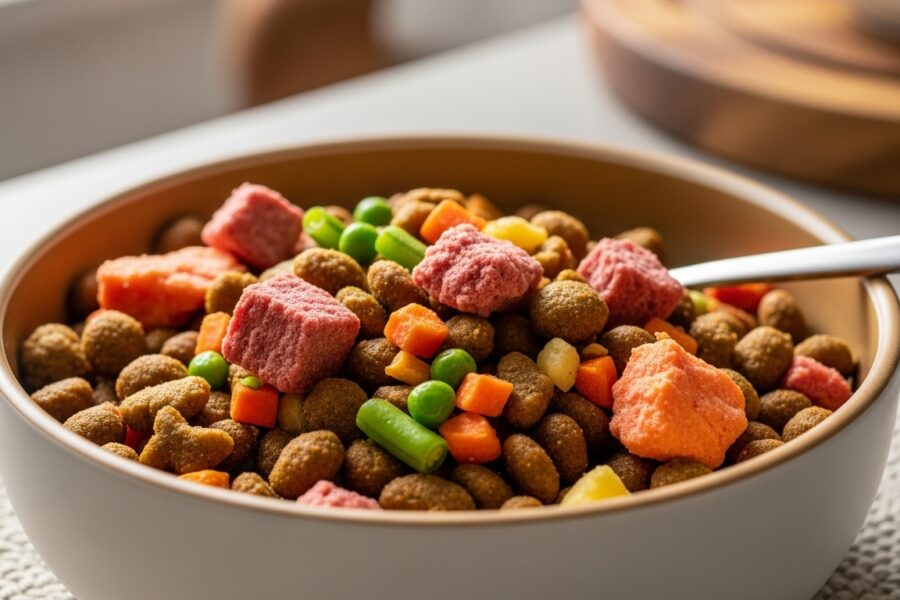Table of Contents
Introduction
If you want to know exactly what’s in your dog’s bowl and avoid the questionable ingredients in many commercial foods, homemade chicken dog food is a fantastic solution! Chicken is lean, affordable, and a big hit with most pups. This guide includes vet-approved recipes that are not only healthy and tasty but also super easy to make, even if you’re just starting out in the kitchen.
Whether your goal is to add variety, help with sensitive tummies, or just spoil your furry friend, these homemade meals will make your dog’s tail wag with joy. Plus, we’ll cover how to keep your homemade dog food healthy, safe, and balanced!
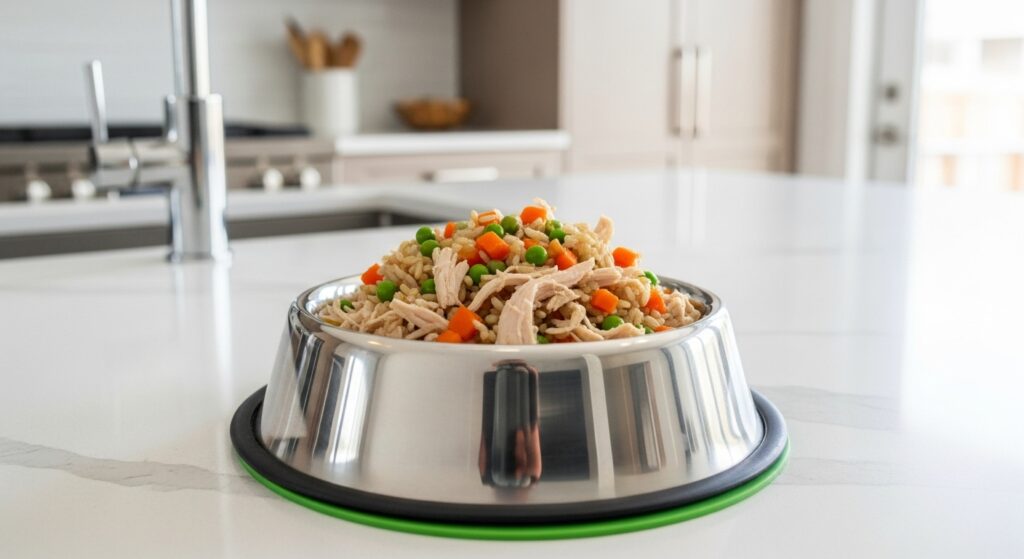
Why Choose Homemade Chicken Dog Food?
- Ingredient Control: You know exactly what goes into every meal.
- Customizable: Adjust recipes to avoid allergies or fit special needs.
- Fresher Taste: Dogs love real, unprocessed meals!
- No Fillers: Skip the corn, soy, and artificial stuff found in many mass-market brands.
- Save Money: Cheaper than many premium dog food brands.
Vet-Approved Nutritional Guidelines
Before switching to homemade, always check with your vet—especially if your dog has special health concerns. Dogs need protein, carbs, healthy fats, fiber, plus essential vitamins and minerals. The key is balance, so don’t just feed plain chicken every day.
A simple ratio recommended by many vets:
- 40% protein (chicken, eggs)
- 50% carbs (rice, sweet potato, oats)
- 10% veggies (carrots, peas, pumpkin, spinach)Add healthy fats (salmon oil, olive oil), and a pet-safe multivitamin if suggested by your vet.
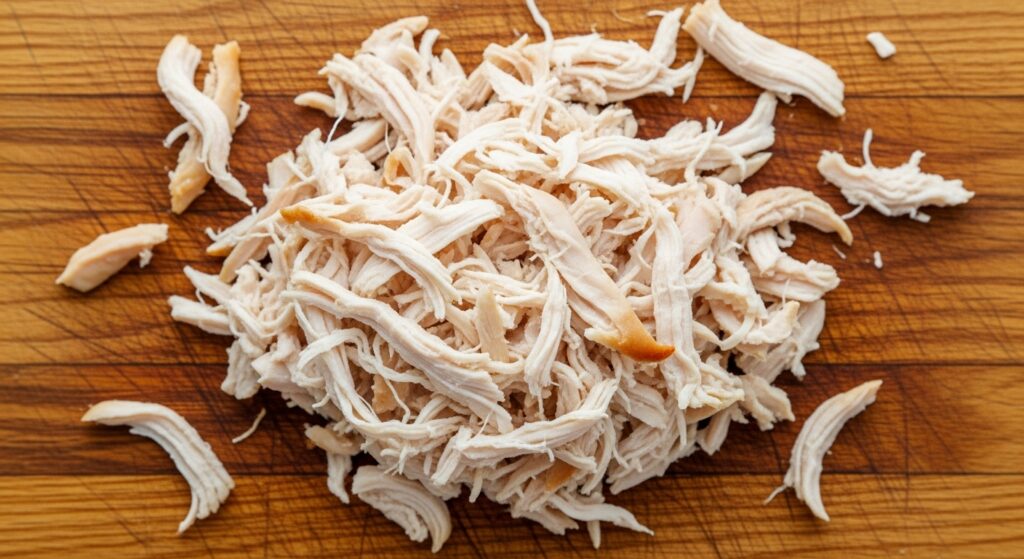
Basic Homemade Chicken Dog Food Recipe
This recipe is gentle on sensitive stomachs and is ideal as a starting point. It’s freezer-friendly and works for small or large batches.
Ingredients:
- 2 cups boneless, skinless chicken breast or thighs
- 1 cup brown rice (uncooked)
- 1 cup carrots, chopped
- 1/2 cup green peas
- 1 tbsp olive oil
- 3.5 cups water
Directions:
- Add chicken, rice, carrots, and water to a large pot.
- Bring to a boil, then reduce heat and simmer for 25-30 minutes (until chicken is cooked and rice is tender).
- Remove the chicken, shred with two forks, and return to pot.
- Add peas; simmer another 5 minutes.
- Let cool, stir in olive oil, portion into daily servings, and refrigerate or freeze leftovers.
Serving Size:Feed about 1/2 to 1 cup per 10 lbs of body weight daily (split into two meals), but always adjust based on your dog’s age, activity, and needs. Ask your vet if you’re unsure!
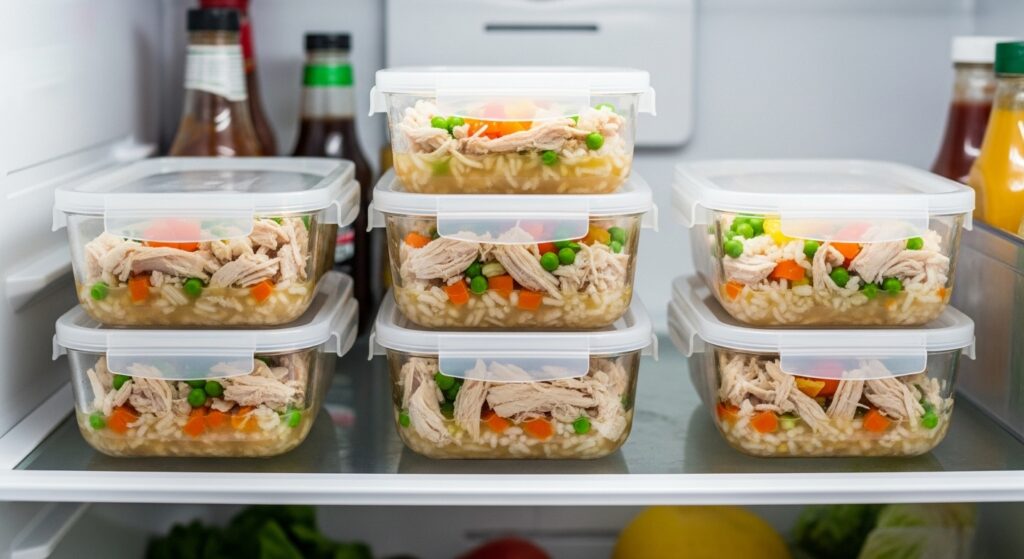
Grain-Free Chicken & Veggie Dog Food
Ideal for grain-sensitive dogs or those on special diets.
Ingredients:
- 2 chicken breasts, cubed
- 1 large sweet potato, peeled and diced
- 1 zucchini, chopped
- 1 apple, cored and diced (no seeds)
- 2 tbsp coconut oil
- 1/2 cup water
Directions:
- Heat coconut oil in a large pan. Add chicken and brown slightly.
- Add sweet potatoes, zucchini, and apple. Stir well.
- Pour in water, cover, and simmer until veggies are soft and chicken is cooked (about 20 mins).
- Let cool before serving.
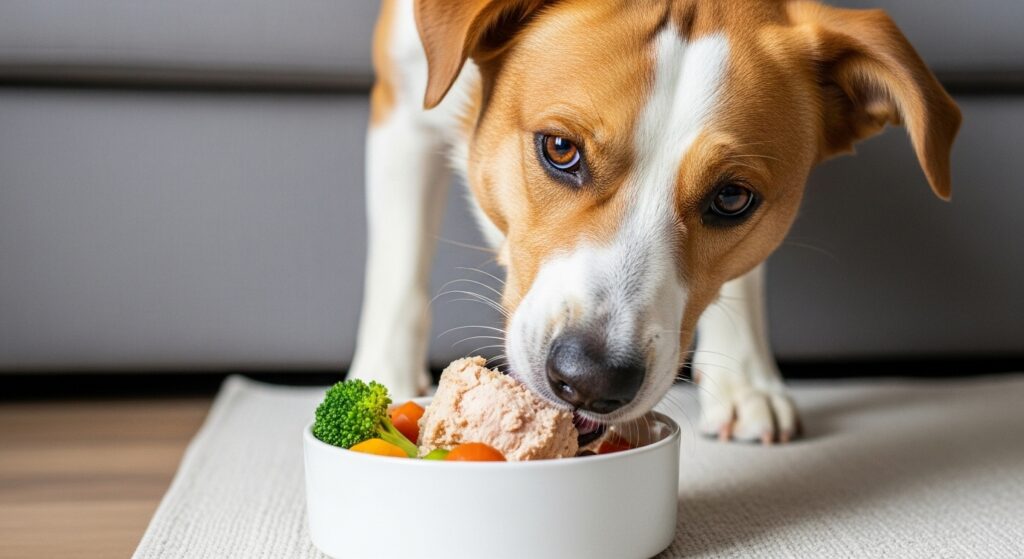
Tips for Safe, Balanced Homemade Dog Food
- Rotate Protein Sources: Try turkey, beef, or fish sometimes for variety.
- Use Dog-Safe Veggies: Avoid onions, garlic, grapes, raisins, and avocado—these are toxic to dogs!
- Don’t Skip Supplements: Most homemade diets need calcium and sometimes a multivitamin. Ask your vet about eggshell powder or canine-specific supplements.
- Freeze Extra: Store in airtight containers up to 3-4 months.
- Transition Slowly: Mix gradually with your dog’s regular food at first to avoid tummy upset.
Customization Ideas
- For Senior Dogs: Add joint-health supplements (like glucosamine) after cooking.
- For Picky Eaters: Stir in a tablespoon of plain pumpkin puree or Greek yogurt.
- For Allergies: Swap chicken for turkey, and rice for quinoa or potato.
Frequently Asked Questions
1. Can I feed my dog only homemade chicken dog food?
It’s best as part of a balanced rotation, or with your vet’s guidance to ensure all nutritional needs are met (especially calcium, certain vitamins, and fatty acids).
2. How do I store homemade dog food?
Fully cool, portion into airtight containers, and refrigerate for up to 4 days or freeze for longer storage.
3. Do I need to add supplements?
Yes—most homemade diets are low in calcium. Consider adding eggshell powder, ground bone meal, or a commercial canine supplement (ask your vet for advice).
4. Can I use chicken with bones?
No—always remove cooked bones! They can splinter and cause choking or internal injury.
5. Is homemade chicken dog food cheaper?
Often yes, especially compared to premium fresh-frozen brands. Plus, you control ingredient quality!
Final Thoughts
Making your own chicken dog food at home is a fantastic way to pamper your pup with wholesome, fresh meals—just be sure you’re hitting all their nutritional needs. Remember to chat with your vet before switching to a fully homemade routine, especially for puppies, seniors, or dogs with medical conditions. Most of all, enjoy these tasty moments with your best friend!

